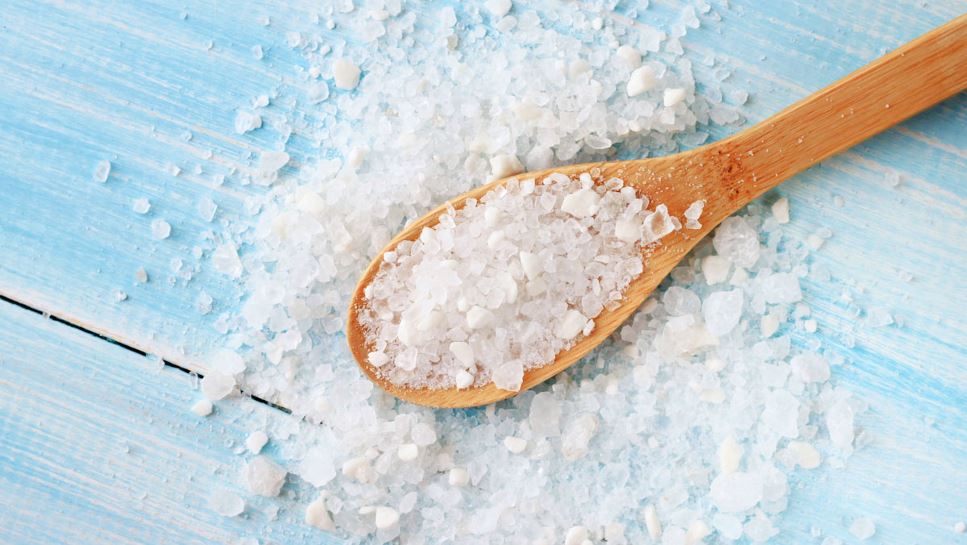Although all salts are, well, salty, there are differences in taste among various kinds of sea salt. Wherever there is saltwater, you can find sea salt — and each region and harvesting method has its own unique attributes. Although sea salt is more expensive than table and kosher salt, some people find they use a lot less of it than table salt.
Nutritionally Speaking
While sea salt is sometimes promoted as a healthful alternative to regular table salt, the sodium content is essentially the same. Nine out of 10 Americans consume too much sodium, according to the American Heart Association. While the majority of sodium in the diet comes from processed and restaurant foods, about 11% is from salt added during cooking or at the table. Excessive sodium intake can increase risk for stroke, heart failure, high blood pressure, kidney disease, osteoporosis, gastric cancer and kidney stones. Too much sodium also can cause water retention, resulting in bloating, puffiness and weight gain.
One advantage of sea salt is that people tend to use less when cooking or finishing dishes. Sea salt is less processed than table salt and, depending on the type of sea salt, naturally offers trace amounts of minerals, although the amount isn’t enough to contribute to daily needs.
Growing
Sea salt is made from seawater from the ocean or salty lakes. Typically, the seawater is either fed into a shallow pool or a saltworks (a manmade saltwater pool) where the sun evaporates the water, leaving behind salt crystals. It’s then raked to break up the salt beds. Depending on the variety of salt, the harvesting process may differ somewhat. Sea salt producers tend to be in warmer climates that have little rainfall.
Availability
You can find some varieties of sea salt at grocery stores; check spice stores and online marketplaces for more options.
Purchasing
Sea salt is available in a variety of crystal sizes, ranging from flaky to coarse to fine. Some sea salt is smoked. Look at the packaging to see the salt’s composition — it should list minerals (in addition to sodium chloride). Sea salts that are packaged with their moisture intact typically keep more of their trace minerals. More refined sea salts tend to be white in color, while unrefined sea salts range from beige to gray to pink, red and black. The colors are due to the mineral content from where the salt is harvested.
Storing
Storage life for salt is indefinite. Salt absorbs moisture, so keep it in a sealed container to avoid caking.
Preparing
Size and shape of the salt crystal determines how quickly it dissolves in foods, so which salt you should use depends on what you’re making. Use fine grain as a finishing touch to delicate sauces and salads. Flakes make a lovely garnish and add a clean flavor and crunch to sliced heirloom tomatoes and handmade caramels. Larger coarse crystals are ideal for rubbing roasts or whole fish before cooking to seal in moisture and make a nice crust.
Most recipes that include salt refer to table salt. While it is generally accepted that sea salt can be substituted in similar quantities, always start with less than is called for and taste before adding more.
Using
French sea salts are harvested from Atlantic seawater. Arguably the most famous French sea salt is Fleur de Sel (flower of salt), and it’s ideal for salads, cooked fresh vegetables and grilled meats, and combining with sweet flavors like chocolate. Sel Gris (grey salt) is a “moist” sea salt that’s considered by many to be the best quality salt available. Use it in cooking, baking, on seafood or vegetables or as a garnish. Mediterranean sea salt is ideal for sprinkling over your favorite foods or using as a finishing salt or garnish over seafood or vegetables. Alaea sea salt is a pink Hawaiian table salt often used to season and preserve. In addition to Hawaiian dishes, alaea is good on prime rib and pork loin, and it looks elegant sprinkled over fish. Smoked sea salt is great when grilling or oven roasting (especially when cooking salmon) and it adds a smoke house flavor to soups, salads, pasta and sandwiches. Black salt (actually a pearly pinkish gray color) has a sulfuric flavor and is used in Indian cooking. Kosher salt, which is named for its use in meat preparation according to Jewish dietary guidelines, is not necessarily sea salt, although many recipes use the terms interchangeably.
This information originally appeared in Food & Nutrition Magazine®, published by the Academy of Nutrition and Dietetics.
References
Find a Nutrition Expert
Looking for credible nutrition information and recommendations? The Academy of Nutrition and Dietetics' network of credentialed food and nutrition practitioners are ready to help!

